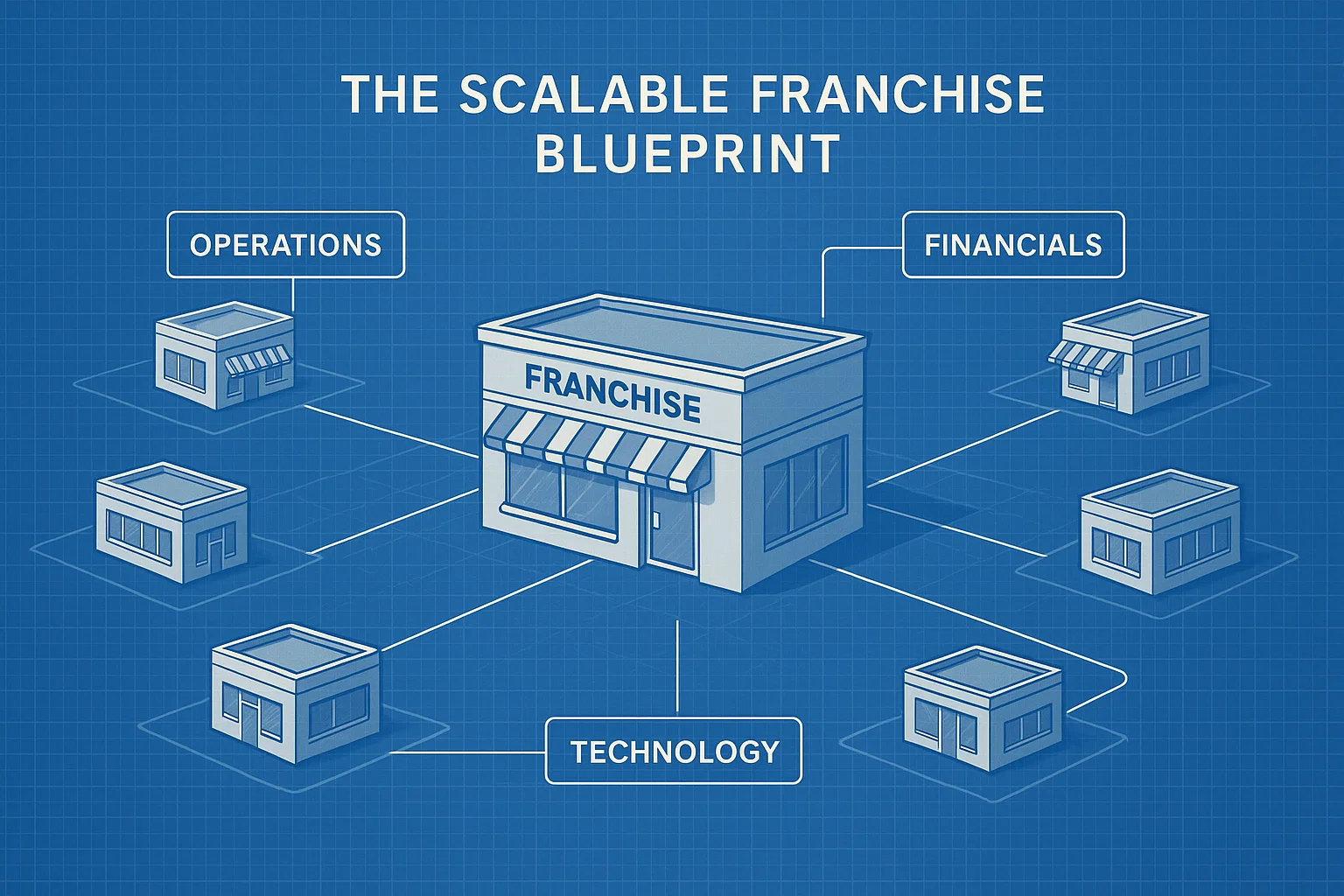For startup franchisors and emerging franchise brands, the road from concept to national expansion can feel overwhelming. With limited capital and even more limited time, hiring, training, and managing an internal franchise sales team often proves to be inefficient, expensive, and unproductive. The most effective solution lies in leveraging a professional Franchise Sales Organization (FSO)—a proven model that delivers scale, speed, and results without the overhead or the risk.
WHY STARTUP AND EMERGING FRANCHISORS SHOULD USE A FRANCHISE SALES ORGANIZATION (FSO) TO SELL FRANCHISES
By FMM Contributor
Emerging franchisors, particularly those in retail and restaurant segments, face a critical fork in the road when launching their expansion strategy. They must decide how best to grow, internally, through in-house hires, or externally, through an outsourced team of specialists. Choosing the right path can be the difference between stagnation and scalable growth. For many, the smartest route is aligning with a reputable Franchise Sales Organization (FSO).
An FSO is a specialized outsourced sales department built specifically to sell franchises. Unlike hiring an individual salesperson, FSOs bring an entire sales infrastructure, including seasoned franchise consultants, administrative support, sophisticated CRM platforms, and turnkey telephone services. That full stack of resources comes without the headache or high cost of building an in-house team.
The Cost Burden of an In-House Franchise Sales Team
For startups, hiring full-time salespeople can be financially draining. A competent franchise salesperson can command a base salary of $75,000 to $125,000, not including performance bonuses, commissions, payroll taxes, healthcare, and 401(k) contributions. Layer in additional hires to manage CRM systems, conduct Discovery Day planning, send out Franchise Disclosure Documents (FDDs), and follow up with leads, and that expense easily crosses six figures.
Office space must be provided, along with phone systems, software, laptops, and administrative staff. Startups rarely have the internal bandwidth or capital to absorb these demands. Worse, training someone new in franchise sales can take months before the first unit is sold. Time is lost, and so is momentum.
FSOs Deliver Ready-to-Execute Sales Infrastructure
An FSO eliminates these startup barriers. Their teams are already trained. They know how to qualify leads, present the brand’s opportunity, handle objections, manage legal timelines, and coordinate follow-ups all the way through Confirmation Day. They also send out FDDs, track signatures, and ensure compliance with state regulations. With an FSO, a startup can plug into a fully operational sales machine on day one.
Reputable FSOs include CRM tools so the franchisor can monitor activity through written reports. This allows the franchisor to see when calls are made, documents are sent, and follow-ups occur. There’s no mystery, just clarity and results.
Better Than Broker Networks
While franchise broker networks once played a leading role in franchise development, they are increasingly ineffective for newer, non-service brands with higher investment levels. Brokers tend to gravitate toward service brands, which offer quick closings, low investment levels, and high commissions. Restaurant and retail concepts that require buildout, equipment procurement, and staff training are often bypassed. FSOs, by contrast, specialize in building long-term, scalable systems to bring the right buyers to the table, even for high-ticket franchises.
FSOs Go Beyond Sales—They Build Foundations
The best FSOs aren’t just closers. They serve as advisors. They work with the franchisor to fine-tune the franchise offering, identify strengths in the unit economics, and sharpen the marketing message. Many also offer advisory services that support the entire franchise ecosystem, real estate sourcing, lease negotiation, supply chain optimization, site design, and equipment packages. This value engineering improves ROI for both the franchisor and franchisee.
In addition, a good FSO will connect qualified candidates with funding sources. These may include SBA lenders, franchise loan providers like Benetrends, or even funding specialists who help candidates use retirement funds to buy a business. This is a critical component in getting deals closed. Without it, many otherwise interested buyers simply walk away.

| Finance Your Franchise – Franchise Growth Solutions (917) 991-2465 [email protected] franchisegrowthsolutions.com |
A No-Brainer for Startups and Emerging Brands
Startups cannot afford delays. They must validate their concept, generate unit-level success, and attract qualified franchisees fast. FSOs bring years of franchise sales experience, industry relationships, and technical execution to make that happen.
They also carry credibility. Prospects respect brands that operate professionally. When a prospect sees a structured sales process—clear communication, defined next steps, prompt document delivery, and consistent follow-up—they gain confidence in the franchise. That confidence often translates to a sale.
There is no better way for an emerging restaurant or retail brand to go to market than by partnering with a competent, proven, results-driven Franchise Sales Organization. For the cost of one underperforming salesperson, a franchisor gains an entire growth machine.
Copyright © Gary Occhiogrosso. All Rights Reserved Worldwide
Sources
- International Franchise Association (www.franchise.org)
- Franchise Times
- Franchise Update Media
- Entrepreneur Franchise 500 List
- Benetrends Financial
- FranData
- Franchise Growth Solutions
- SBA.gov
- FranchiseHelp.com
- Forbes Small Business Franchise Insights
LEARN MORE HERE
This article was researched, outlined and edited with the support of A.I.










